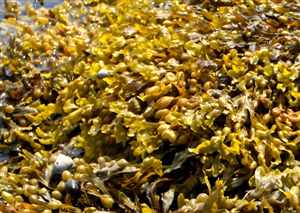Kelp (Laminariales Phaeophyceae)
Main Facts about Kelp

Using Kelp
Kelp is well known as an excellent source of most of the important minerals. Kelp contains many vitamins, especially B vitamins, which are essential for cellular metabolism and providing your body with energy. It also contains vitamins C and E, which are both strong antioxidants and promote blood vessel health. Minerals, such as calcium, boron and magnesium are plentiful in kelp; they are necessary for strong bones and normal muscle function. Kelp, like other seaweeds, is rich in sodium alginate, which is an element effective at protecting the body from radiation and removing it. Kelp is also a rich source of iodine, which is a crucial nutrient for the thyroid. Consuming iodine from plants like kelp also helps reduce the effects of radiation exposure.Caution!
Although some iodine is essential for thyroid function, ingesting too much of it can negatively affect thyroid function, causing hypo- or hyper-thyroidism. Kelp might also contain arsenic, and consuming large amounts of kelp supplements might lead to arsenic poisoning.Cooking with Kelp
You can either steam, saute or boil dried kelp to serve as a side dish or use in a recipe. About 15 minutes is required to cook dried kelp, no matter which method of cooking you choose.| Kava-kava |
Lemon
|